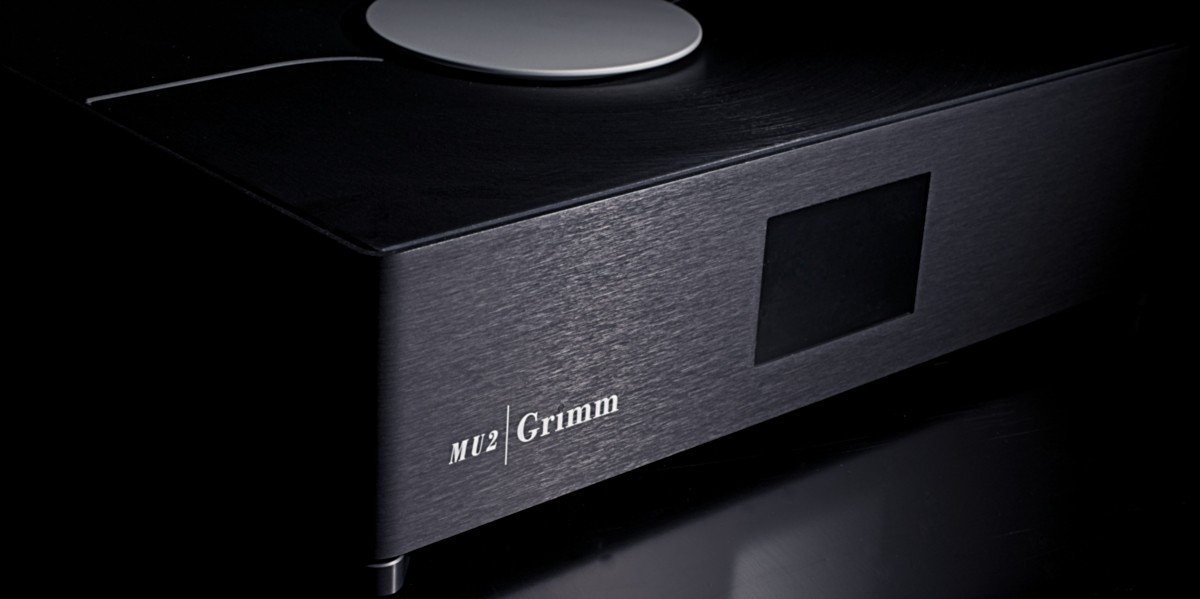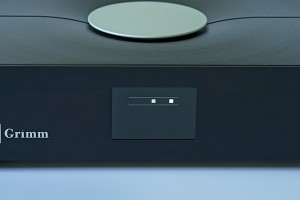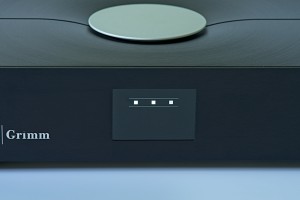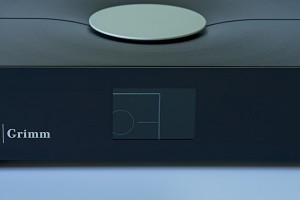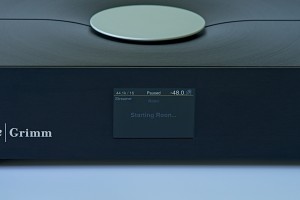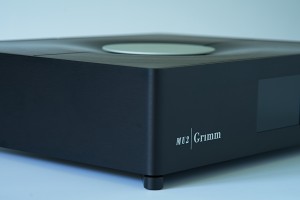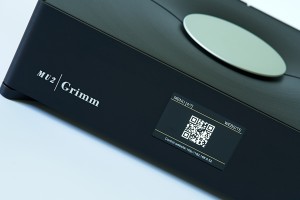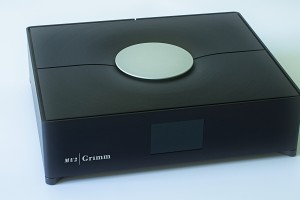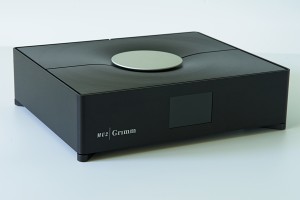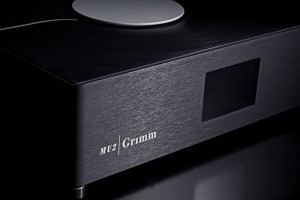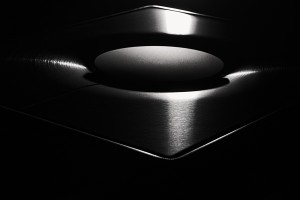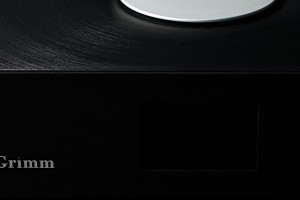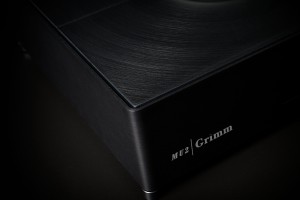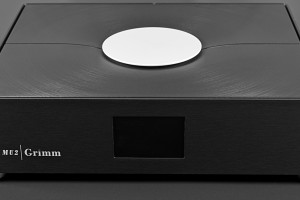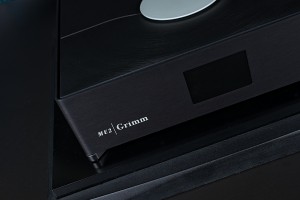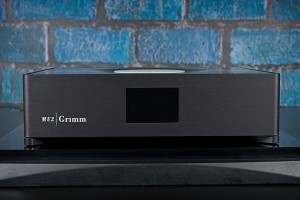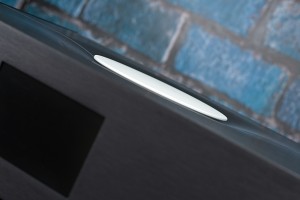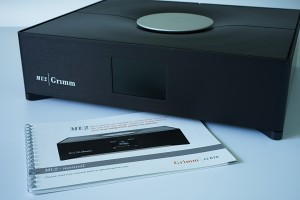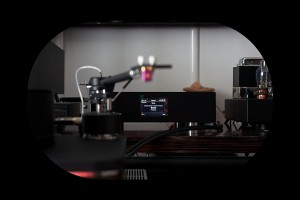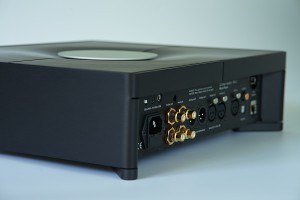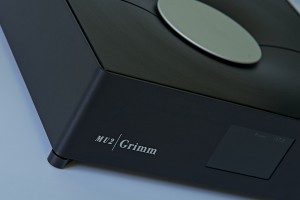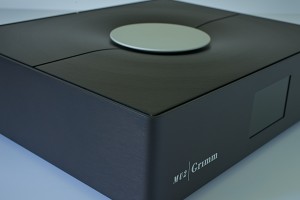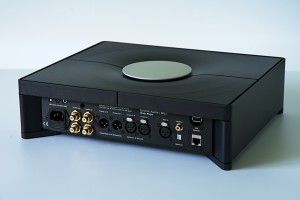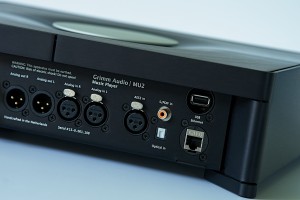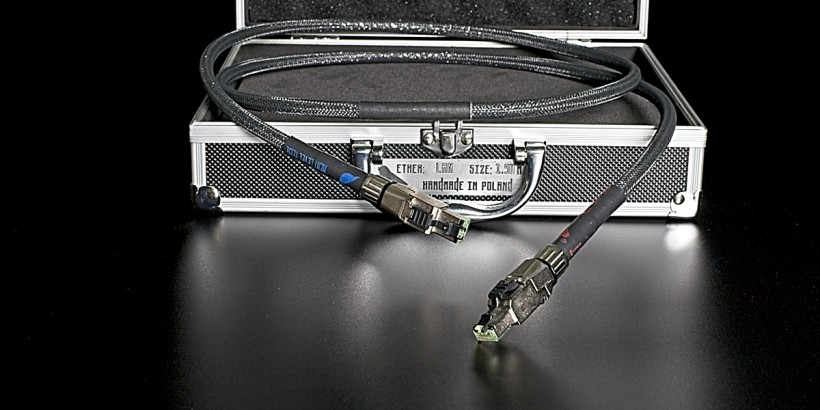If a streamer, DAC, and preamplifier, all in one sleek box is what you’re looking for, Roon is your thing, the Dutch Grimm Audio MU-2 has it all, and more. Let’s not forget what ultimately matters most, sound quality, which will impress even the most demanding music lovers. Interested? Keep on reading!
Introduction
I am not quite sure when exactly I encountered Grimm Audio for the first time but it definitely was at the Munich High End Show some years ago. Before I learned anything about the company and the people behind it, I was first impressed with the sound quality of their active speakers based system, the LS1. I call it a system because these relatively flat speakers featured not only amplifiers but also D/A Converter, which turned those speakers into an almost complete audio system. Almost, as the only thing missing was a source of a signal. Which, by the way, is where the MU-1 and the tested MU-2 come in.
The other thing that sort of impressed me by its boldness, again – before I learned anything about the company, was the name. When I hear the word ‘grim(m)’ what comes to mind first is perfectly reflected by the definition pasted in below:
„Things that are gloomy, stark, ghastly, and somber are grim. Sunshine, puppies, and rainbows are not grim; zombies, reapers, and mummies are grim. Less scary things like drizzly, foggy days can also be called grim. Two famous uses of the adjective grim are the Grim Reaper and Grimm’s Fairy Tales.”
Source: Vocabulary.com
On the other hand, as a science-fiction and also a bit of a fantasy fan myself, when I hear ‘grim’ I also think about a TV Show from a few years ago, with the main character, the Grimm, being a (sometimes reluctant) slayer of various types of monsters pretending to be people and living among them. Consider the fact, that when you hear the word ‘grim’ you can’t really say whether there is one or two ‘Ms’ at the end… And yet, the sound that I heard at the Munich High End Shows was definitely not gloomy or somber. It was really good, lively, dynamic, resolving, and, most importantly, fun to listen to. So it caught my ear.
I bet that the founders of the company didn’t think about any of those word associations when they named their company, founded in 2004 (so a long time before the aforementioned show, by the way), Grimm Audio. The fact that the company’s name came from Eelco Grimm, the creative director for the company, who next to Guido Tent, is the driving force behind the brand gives you the real reason for the name, yet associations (at least for some of us) remain. Let me add already right now, that the sound of the tested Grimm Audio MU-2 is definitely not grim. Quite the opposite! We’ll get back to it in a minute.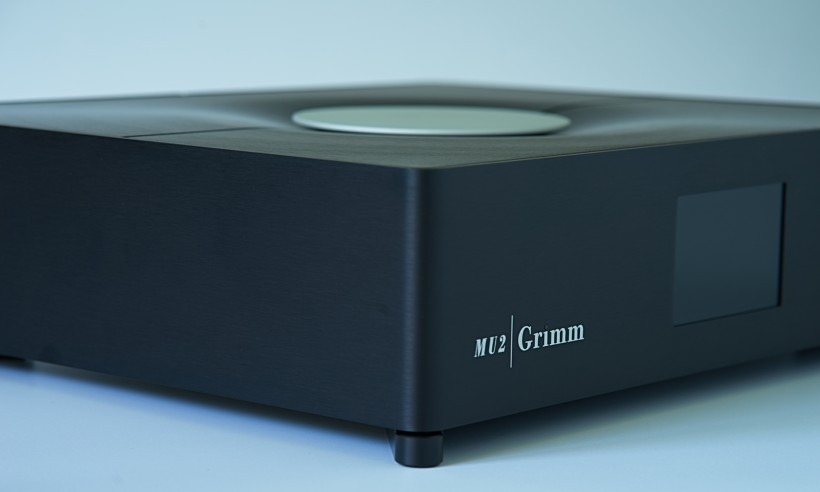
As already mentioned, the company was founded in 2004 in Eindhoven, Netherlands. The first time I heard one of their products in Munich, was at the High End Show, where they presented the LS1 but in fact, it was not the company’s first product. They had started earlier with the AD1 discrete 1-bit analog-to-digital converter before the LS1 and later added a specially developed master clock CC1. You may have heard of it if you’re a fan of, for example, Channel Classics label and its highly regarded releases, as they have been using this particular ADC in their studio.
Today the company’s portfolio is still not particularly big, as on the one hand, they focus on offering a full signal chain, and on the other, they don’t focus on introducing new products but rather on improving existing ones, and once they do, whenever possible, they offer their customers a possibility of an upgrade. I don’t know about you, but I like this type of policy way more than having to sell an ‘older’ model to buy a new one. In Grimm Audio’s home audio portfolio, one finds speakers and subwoofers, music players (MU-1 and MU-2), master clocks, and audio cables. Some of you may have noticed that at the last Munich High End Show also the PW1 phono stage was introduced, which is expected on the market later this year. The company also continues to work with the people from ‘the other side of the glass’, offering several products for audio professionals including speakers, DACs, master clocks, cables, microphone, power supplies, and even specialized software.
In this review we shall stay on our side of the glass, though. Even though already when I talked to the guys at the Munich Show a few years ago I expressed the will to review their LS-1 speakers, the very first Grimm Audio product that only recently visited my room, with the help of the Polish distributor, Audiofast, was the MU-2. The Dutch manufacturer classifies them (I mean both, MU-1, and MU-2) simply as Music Players, which on the one side is a kind of vague description fitting almost any sound source, on the other nicely covers most of what this device has to offer.
To know exactly what the tested Grimm Audio MU-2 does, first of all, you should know that, the same as MU-1, it was developed with Roon in mind. It can act as both, Roon core or Roon endpoint, which means that (at least for now, as future software updates may change that) one needs a Roon license or subscription to operate it. Inside the sleek chassis manufacturer placed also a D/A Converter featuring digital inputs, a preamplifier with line inputs and outputs, analog volume control, and finally a headphone output that makes another potential separate device, a headphone amplifier, obsolete (at least unless you’re a very demanding cans’ user – more about it later).
If you choose to go with a minimalist setup and install an SSD inside (2 or 8 TB) and store your music on it (or you could use a USB port and connect a USB stick with your music) all you will need to complete your setup and play music will be an amplifier (power amp or integrated) and speakers. Obviously, you could use Grimm Audio’s active speakers (and, maybe, also subwoofers if you need them), and pair them (preferably) with the MU-1 (since LS1’s crossovers operate in the digital domain so supplying them with a digital signal is preferred) thus covering everything one needs to play music.
It is worth remembering, when considering the substantial price of Grimm Audio MU-2 that using this type of a-lot-in-one will save you quite some money that you would have to otherwise divide between a few components and cables powering and connecting them (not to mention the way more space you’d need). It is a valid consideration if the sound quality justifies the price. That’s what I planned to find out.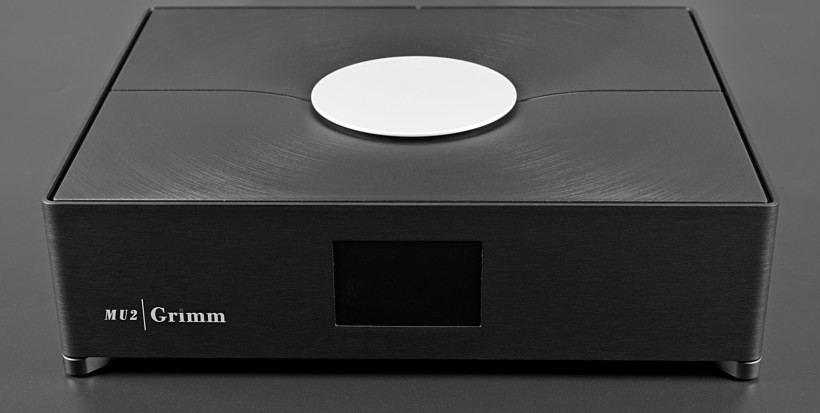
Design and Features
Grimm Audio MU-2 is a surprisingly small and light device. Surprisingly for me, I must add, as I didn’t have a chance to review the MU-1 and it seems that both share the same chassis. On the other hand, unless the DAC or preamplifier sections feature tubes, there is not much reason for such a device to become particularly big and/or heavy. The MU-2 measures only 355 x 295 x 100 mm while weighing 4,5 kg. There are no buttons or knobs on the front of the device but only a 3,5 inch TFT LCD display. The only manipulator is a large wheel on the top of the device. One can turn it both ways and/or push it (short, double, and long pushes are differentiated and are responsible for various functions – if not for any other reason, the operation of the device is one to study the manual).
Funny enough, my first thought after unpacking MU-2 and placing it on the rack was that, when looked at from the top, it reminded me of a… vinyl record. It was black, rectangular but with sort of circular markings from machining (I guess) that looked a bit like a groove, and a large wheel in the middle, which seemed an equivalent of a label on a record. I suppose those who are not vinyl aficionados may never even think about the Grimm Audio’s Music Player’s external design in this way, but for me it was sort of obvious, and encouraging, to be honest.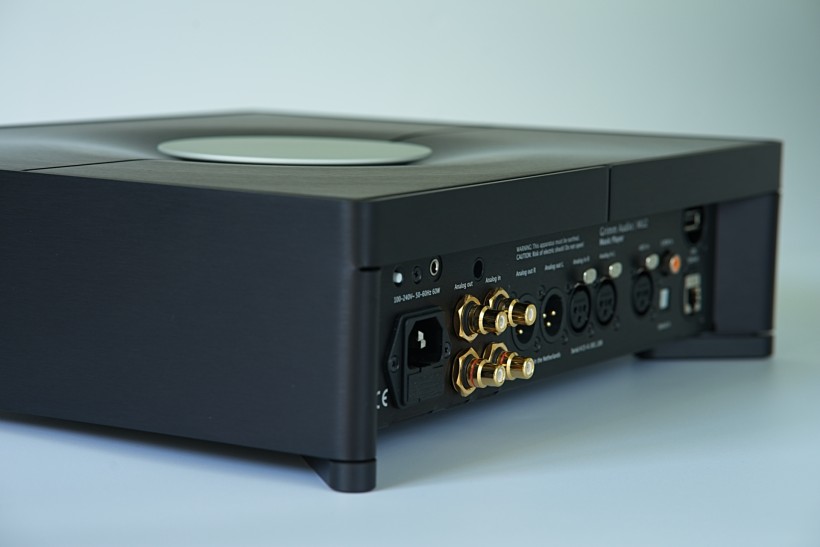
On the streaming side, it is a Roon core, but it can operate also as a Roon endpoint for an external Roon core. In either case, one needs a separate Roon license so add it to the price of the device if you consider purchasing it. The device utilizes an SSD for its operating system but it may also feature a second either 2 or 8 TB SSD that allows storage of quite a large music library. Also, Roon integrates streaming services such as Qobuz, and Tidal, so one’s local library is not the only available source of music (assuming one subscribes to at least one of the two services). To play music from an external Roon core or streaming service, and even to operate it remotely (via either the Roon remote app, or a web interface of the MU-2) one has to use the only available, wired connection (no Wi-Fi, or Bluetooth). The web interface allows you to operate the device itself rather than playback except for the simplest functions such as play/stop, and forward/backward.
One of the key features of the MU-2 is its discrete, employing a powerful FPGA processor, D/A Converter called ‘Major DAC’. The FPGA engages sophisticated upsampling and noise-shaping algorithms, and the whole circuit is supported by a very low jitter clock and a switching-mode power supply developed in-house, featuring another Grimm Audio’s proprietary element, the voltage regulators.
As the manufacturer explains:
„In our experience, high-quality audio requires an extreme linearity and dynamic range. Even though modern chip technology allows for very advanced implementations, none of these seem to fully satisfy the high-end audio enthusiast. (…) In a project of three years, we created a unique digital-to-analog converter that has an optimal combination of dedicated DAC pre-processing in FPGA and our own discrete DAC hardware.”
„It is using a 1.5-bit architecture. (…) The implemented solution in the Major DAC results in a zero error operation of the noise shaper. Moreover, the 1.5-bit DAC choice offers such a stable noise-shaping operation that it allows for a highly optimized, unique 11th (!) order noise shaper.
To filter the resulting strong high-frequency noise before it enters the analog signal path a so-called FIR DAC topology is employed, using 16 DAC cells per channel. And while we are on the topic of filtering: worth noting is that the input of the noise shaper is fed from our extreme precision ‘Pure Nyquist’ digital FPGA filter, running at 128 times the base rate.”
Source: GRIMM AUDIO 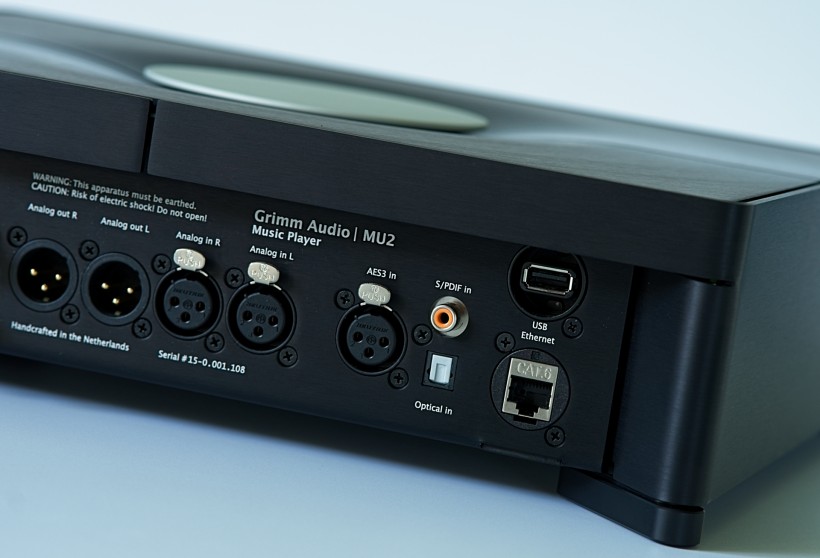
From the user’s perspective what matters (apart from performance) is that next to Roon the built-in DAC features three digital inputs: AES/EBU, coaxial SPDIF, and Optical Toslink. There is also a USB port that can be used to connect an external drive with music files. The preamplifier section, apart from relay-based analog volume control (that operates in the +8 dB to -79 dB range in 1 dB increments) features two analog inputs and two outputs. In both cases, there is one balanced and one unbalanced set of connectors at the user’s disposal. The output (the manufacturer suggests one uses only one of them at the time) is adjustable but can also be set to fixed, if one prefers to use it with an external preamplifier or integrated amplifier. One more useful feature is a 6.3mm jack headphone output. Just remember that the headphone output has to be selected – MU-2 won’t switch the output to headphones by itself after one plugs in one’s cans.
The audio file and streaming functions are offered by Roon Labs software. The operating system is Tiny Core Linux. Grimm Audio has developed most of all the other software that runs in the MU2. The preamp section has an analog audio signal path that is Class A throughout, focusing on ultra-low harmonic distortion and ultra-low phase modulation. The relay-based analog volume control with a signal path in Class A throughout lets the user control external analog sources equally well as digital and internal sources.
Long story short, this single device in a sleek metal chassis can replace up to four components (Roon server, DAC, preamplifier, and headphone amp) so all you need for a complete setup is a power amplifier and speakers (or active speakers). If you’re worried about being able to operate it, don’t. The manufacturer did a really good, actually better than most, job of explaining both software and hardware, and the only thing to get used to is the operation of the large ‘wheel’ on top of the device. So far, the Grimm Audio MU-2 seems a truly interesting solution for many audiophiles. There is one last condition it has to match to satisfy their needs – the performance has to be as impressive as its functionality. Let’s dive in.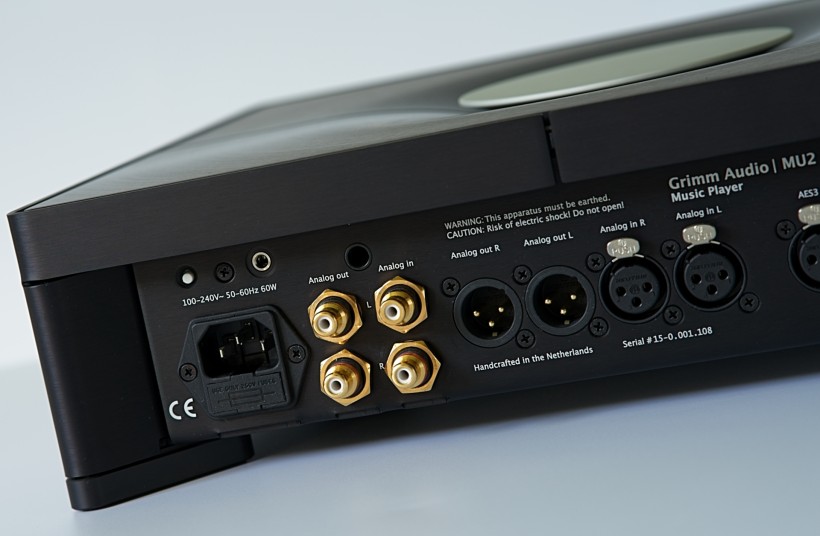
Sound
If you’ve had any experience in the audiophile world you have probably already learned that the sound coming from speakers or headphones to your ears is a result of the operation and cooperation of all the devices that are a part of any given setup (and room acoustics, when you use the former, and even you, the listener). Why do I even bring it up? When I connected Grimm Audio MU-2 for the first time, having great expectations, I felt a bit… disappointed. I mean, the sound was good, but just good, while I anticipated something more. Maybe it was a bad day for me, not in the right mood (both happen and do influence perception), or maybe the setup was not optimal, even though a day earlier an almost identical one featuring a different server, DAC, and preamplifier (all my regular, reference ones) sounded amazingly good. Whichever was true, I knew I had to change something to get it ‘right’.
So the next day I started shuffling things a bit around in the system looking for the optimal set of components, with the most important (although not the only one) change being replacing (let’s leave them nameless, but still really good!) speakers with my own, GrandiNote MACH4. I connected MU-2’s balanced output directly with an input of my Circle Labs M200 power amplifier using the KBL Sound Himalaya 2 interconnect. For the most part of the test, I used my own server as Roon Core simply because I didn’t have a second license, so I could use one or the other at any time. Using my server made things easier for me as I could send a signal from it via USB to my LampizatOr Pacific 2 DAC and via LAN to MU-2 thus, maybe not perfectly but still, compare the two DACs. Also, for some time, I used Grimm as a preamplifier for LampizatOr comparing it to my reference preamp.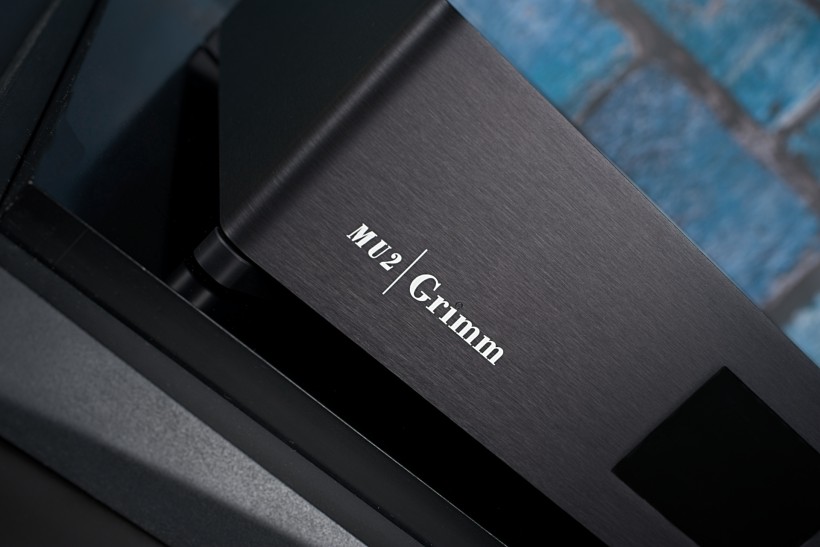
ROON SERVER/END-POINT / DAC /PREAMPLIFIER
After all the changes and small adjustments when music finally started to play with the reviewed device in the ultimately selected setup I knew I did something right, and so had the Grimm Audio designers! Unlike the day before, now right from the start I felt interested, intrigued, and shortly after that even impressed, so I knew I could start to assess Grimm Audio MU-2’s performance and, spoiler alert (!), truly enjoy it from this point on. Also, judging by some tracks listened directly from MU2 (probably ‘leftovers’ from the previous listening session), those delivered by my server over LAN, and those played from an external USB HDD connected directly to MU-2’s USB port it seemed that the performance was identical (I mean, if there was any difference it was negligible) which meant it didn’t matter which one I used.
The only difference was that when I played those, let’s call them, leftover files from the previous session, or those from the external drive when using Grimm’s build-in server all the information on them was presented on the device’s display. Only when used the tested device as an endpoint I couldn’t see the info on the display. As Eelco Grimm explained, the endpoint feature awaits certification and that’s the reason for this ‘issue’ if you even want to call it that. The point is that when using Roon you operate playback using the Roon app so you get all the information on the screen of your phone/tablet/computer and don’t really care about the device’s own display (which is not particularly big and the device is probably placed too far to read the screen anyway). Anyway, for most of the tests, I used the reviewed component as Roon Endpoint/DAC/preamplifier in one.
Now, integrating a few components into one box has its advantages although it has to be executed properly (not to say: perfectly) so that potential interference between those components doesn’t outweigh the pros of such a solution. I couldn’t really say what the performance would be like if Grimm offered a separate Roon server, DAC, and preamplifier, but the MU-2 Music Player delivered a performance that simply made such a question irrelevant. I did plan to later check it also out with fixed output and with my separate preamplifier, but for the moment I really appreciated and enjoyed (which is not always the same thing!) the performance, and my only concern was how to seriously challenge the reviewed component or what to play next.
The ‘serious’ listening started with Tingvall Trio’s „Birds” album and what a treat it turned out to be with the MU-2 used as a Roon endpoint, and later as a server. What was so good about it? You name it! Resolution – excellent, transparency and clarity – impressive, space – huge and three-dimensional, imaging – almost tube-like, and the tonal/timbral rendition of the trio – impeccable! No matter which instrument took the lead, it sounded very natural and rich, and the flow of music was so smooth, so very analog-like that I (almost) didn’t miss my turntable. Those tiny elements, such as decay, or reverb, and those ‘larger’ ones, such as excellent tonal and dynamics differentiation, range extension on both ends, and richness and tunefulness of the midrange, all came together to offer a very compelling, and immersive experience.
The excellent resolution was necessary to excavate all the information, all the details and subtleties of this excellent recording which translated track after track into these natural and realistic renditions of the band, as the Grimm Audio MU-2 did not glorify the abundance as such, but rather used it to convey beautifully rich, complete, complex, yet coherent performance. I could easily follow both piano, double bass, or drums with all the intricate details of individual performances, almost seeing fingers hitting the keys, a bow moving across the strings or sticks hitting drums and cymbals with amazing speed and power, and yet the overall character of the presentation was not particularly analytical.
Unlike some other top digital sources, MU-2 did not reveal any tendency toward dissecting recordings or forcefully finding flaws in them. The ability to dive deeper into any recording seemed more of a by-product rather than an end-product or focus of what MU-2 did with it. Grimm Audio’s Music Player offered a truly refined, classy, highly resolving presentation, no doubt about it, but one that, at least that’s how I perceived it, focused on offering listeners a highly engaging, natural, hence pleasant, non-fatiguing-type experience that drew me into the music and made me want more and more. Let me add, that it’s not an easy feat in my case :).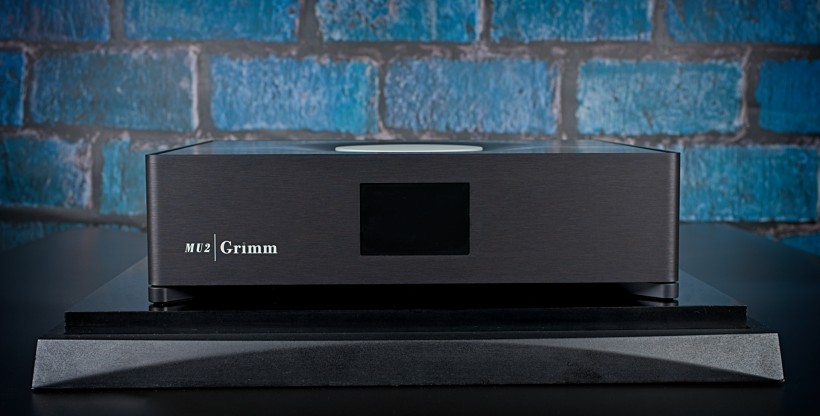
Traditional analysis of the main sub-ranges didn’t make much sense to me. Yes, the bass extension, weight, timbre, and powerful and dynamic delivery were impressive and comparable to the best performances I heard in my room. Sure, the treble was open, lively, and sonorous, and its clarity and energy made me shake my head in disbelief and awe more than once. The tonal richness, palpability, in some recordings even a convincing presence of midrange (or instruments and voices) sounded familiar for a tube, SET in particular, lover such as myself. It is all true. Yet, without combining all these elements so skillfully together, Grimm Audio MU-2 would have been just one of many good, but not outstanding performers.
What set Grimm Audio MU-2 apart from most players I’d ever dealt with was this ability to dig really deep into every track but only to ultimately deliver it with unique musicality. That is why, unlike with many highly analytical competitors, while the tested device still brilliantly differentiated recordings depending on their quality, it also allowed me to enjoy fully both, sophisticated classical and jazz albums, but also those less-than-perfect rock or blues ones. I spent quite a lot of time playing album after album by Steve Ray Vaughan, Muddy Waters, Cory Wong, Dżem, and others without thinking even for a second about any imperfections of those releases. MU-2 effortlessly delivered performances with impeccable PRAT (pace, rhythm, and timing), perfectly conveying also the so important emotional layer and the mood. Blues is all about rhythm and feelings after all, and the Dutch device seemed to ‘understand’ or ‘feel’ it perfectly and turned out to be fully capable of delivering it in a convincing, and engaging way.
With rock music, but also a lot of monumental soundtracks I listened to using Grimm Audio MU-2, it impressed me with the scale of presentation, its dynamics, energy, and panache. Whether the „Live” by AC/DC or a soundtrack from „Dune”, the tested device filled the room tightly with highly energetic, dense, dynamic music. It seemed to deliver even the densest, most complex tracks with ease, effortlessly, without any constraints or limitations. What’s more, while with soundtracks, usually well-recorded, it did not come as a surprise, with rock albums, like the aforementioned Aussies’ concert, or classics by Led Zeppelin or Pink Floyd, I was stunned and impressed with how orderly the presentation was. MU-2 seemed to impose excellent control over somewhat chaotic recordings bringing second-to-none order and clarity while maintaining all the inherent features of such music – the energy, dynamics, power, and most of all… fun!
DAC
Still using Grimm Audio MU-2 as a ‘three-in-one’ I decided to compare it more directly to my own DAC, LampizatOr Pacific 2. I used the same custom Roon Core server (featuring JCAT XE USB card – see the review HERE – with external power supply FERRUM HYPSOS Signature – see the review HERE), but it was connected with Pacific 2 via David Laboga Custom Audio Emerald mk 2 USB cable (see the review HERE), so actually my reference setup. I connected its analog output with MU-2 input hence leaving the preamplifier function to the latter. In Roon, it was easy to send the same files to both DACs and quickly switch between them (switching Grimm’s inputs at the same time).
The first observation on differences between the two did not concern class as such, despite the fact, that Lampizator was a more expensive device (and stand-alone DAC at that). It was about the spatial aspect of the presentation. With MU-2 everything was presented a bit closer to me starting on the line connecting speakers, while Pacific 2 pushed the musicians a bit further away behind the line expanding the depth of the stage even further. Also, the width of the stage was larger with the Polish DAC with sounds (some of them) coming from beyond the left and right speakers. To be clear, the depth of the stage was in both cases impressive, and the imaging was pristine. All the instruments had palpable, three-dimensional bodies, and the location on the stage was firm.
On the other hand, sound as presented by MU-2 was a touch denser, richer, and more weighted down, while Pacific 2 showcased a little more ‘ethereal’, and a touch sweeter approach, with seemingly even more air surrounding the instruments. So when I listened to, for example, Rodrigo y Gabriela („Echoes” from „Mettavolution”) the former gave me more wood, the latter clearer, crispier strings, and a touch more reverb. Both excelled in terms of dynamics, both on macro and micro scale. Both effortlessly conveyed the energy of the performance while as a whole it remained amazingly refined, well-controlled, well-balanced, and simply put highly enjoyable.
Surprisingly, for me at least, in both cases (just to remind you, Grimm is a solid-state device, while LampizatOr is a tube-based one) sound was equally natural, coherent, and fluid. Even if focus and tonal balance, as described for the guitars example above, were slightly different, regardless of the album I played in both cases the presentation of instruments and vocal timbres was equally excellent, natural, and compelling. And equally enjoyable, which, for me, is an ultimate goal while listening to the music. Not that many other D/A Converters could satisfy my expectations in a way even remotely comparable to Pacific 2, and Grimm Audio MU-2 after this head-to-head joined the ranks of those few.
PREAMPLIFIER
To check out how good the preamplifier section of the Grimm Audio MU-2 was (I already knew I preferred it compared to its counterpart in my Pacific 2 in which this feature lags behind its amazing DAC capabilities) I switched the device to fixed volume output and added my Circle Labs P300 preamplifier between the tested Player and M200 power amplifier. Now, it’s not the most expensive preamplifier in the world, nor is it the best there is. Yet, in my opinion, it is an excellent one, punching way above its price point. What adding it to the mix did for me, was deepening the bass, and adding even more slam to it. It’s not that it lacked anything before, or that I’d felt it needed deepening, but in some recordings with the lowest, most powerful sounds, P300 seemed to (help) deliver them in a more visceral way.
In fact, the whole presentation became even richer, and deeper, as the midrange and treble also gained a bit of (natural, not exaggerated!) weight. The same as in the case of people, gaining some weight may be perceived either way depending on individual preferences, so whether one would choose the version with or without any external preamplifier would be more of a question of individual preferences than actual class differences. It could be dependent on the whole setup and what one wants to achieve with it, and, to a point, on repertoire, as for most acoustic music I preferred a direct connection between MU-2 and power amp, but for rock, or orchestral music delivering it with a touch more authority with P300 included in the setup was my first choice. Another aspect to be considered would be obviously the budget – adding another 5,5 kEUR (actually even more, as it entails additional power cable and interconnects) may not be worth considering for many, but some won’t mind if it ensures required results.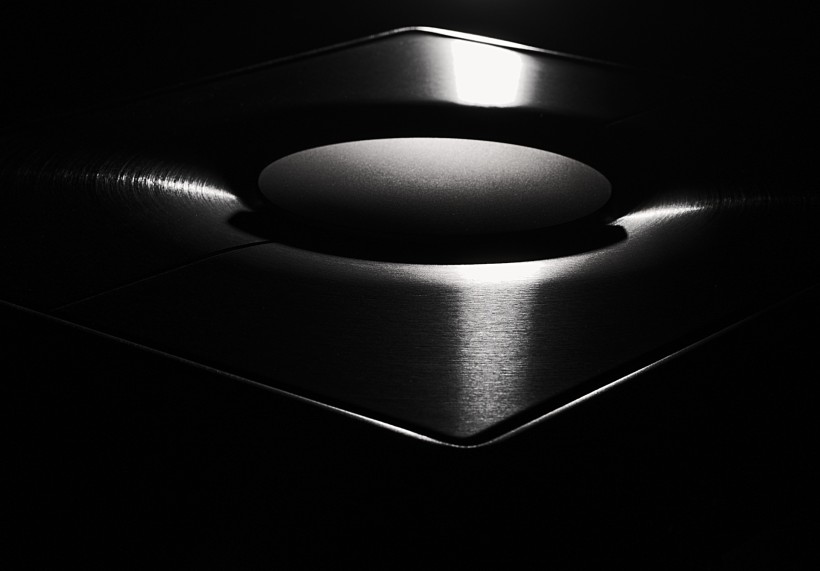
To be clear, neither of these particular ‘advantages’ of using an external preamplifier nor any differences between MU-2 and Pacific 2, were significant. When comparing two devices I have to somewhat exaggerate what makes them sound different to make it clearer for the readers. In this case, they were noticeable, but not significant. Still, they were there and those looking for even the smallest improvements in those particular areas would notice and, most likely, prefer one solution or the other. No doubt, Grimm Audio MU-2 as the three-in-one solution is an excellent performer and at the moment I can’t even think of any other I experienced at home that could compete with it.
HEADPHONES
Although it is not that easy to find the ‘hole’ on the rear panel of the device I kept looking until I succeeded… . I am kidding, obviously, although even as a seldom headphones user I prefer easy access to the output. Anyway, after all the great experiences I’d had so far with Grimm Audio MU-2 I decided not to go easy on it and rolled out the ‘big guns’ or, quite difficult to drive (properly!) Audeze LCD-3 planar-magnetic cans. These have been my favorites for years and it almost never happened that a headphone output of some preamplifier, integrated amp, or DAC was able to do them justice. In fact, many, most even, separate, costly headphone amps struggle to satisfy my expectations. So keeping the latter at bay, so to speak, one evening, I plugged my Audeze into MU-2’s output, switched the output from speakers to cans (as it does not happen automatically), sat down in my chair, and cued in Tomasz Stańko Quarter’s „September Nights”.
To be honest, it’s been a while since my last session with any LCD-3’s worthy companion, so maybe it was a matter of memory failure, but I really liked what I heard. Good resolution and seemingly, and surprisingly, enough power, resulting in good dynamics and clarity of presentation. Nicely extended band’s extremes, with a tight enough bass, and not-so-dark treble. The latter, meaning the ‘dark’ treble, is usually what LCD-3 is ‘accused’ of, but the ‘darkness’ comes from a) high resolution resulting in an abundance of information, and b) the inability of most headphone amplifiers/outputs to drive Audeze effectively to benefit from these cans’ full capabilities.
It wasn’t the best performance by LCD3 I’d ever heard, but it was better not only from all headphone outputs or amps integrated into some other components but also from many stand-alone headphone amps. As I am not a headphone aficionado, and a few more albums, also with more dynamic, larger scale music, confirmed it later, I think I could easily live with Grimm Audio MU-2 driving my Audeze (and Final Sonorus VI) cans on those rare occasions when I want or need to listen to the music in this way.
Summary
I don’t know about you, but when I think about all those all/many-in-one products that become more and more popular (for a good reason, as they got better and are all some customers need) on the market I associate them with convenience, with space-saving, with sleek design, and more and more often with a pretty good sound. Yet, usually, they do not meet the expectations of the most demanding music lovers and audiophiles who prefer a bunch of separate components because that allows them to try various setups and they believe it will offer them a better performance.
Grimm Audio MU-2 Music Player is a different breed altogether. Yes, it can perform several functions in the setup. One can use it as a Roon server or end-point, and it does feature an excellent D/A Converter. One can use it also as a preamplifier and unlike many other devices of this type it excels also in this area so unless you’re ready to spend big bucks on a separate linestage, MU-2 will do a great job paired with your power amp. Also, its ‘hidden’ feature, the headphone amplifier, does an unexpectedly good job so unless you spend a lot of time with top cans on your head and expect their top performance, you don’t need a separate amplifier for that.
Long story short, Grimm Audio MU-2 is a high-end many-in-one component that offers outstanding performance. It’s resolving, dynamic, fast, and detailed but not overly analytical. If anything, it is a very musical component that caught the ear of such a vinyl and tube amps aficionado as myself. I definitely wouldn’t mind having it in my system and that is a high praise coming from me. If you need a damn good digital source (and preamplifier) do yourself a favor, and check the MU-2 out. Even if it won’t be ultimately your choice I am pretty sure you will appreciate the experience!
Price (when reviewed):
- Grimm Audio MU-2: 79.400 PLN
Manufacturer: GRIMM AUDIO
Polish Distributor: AUDIOFAST
Technical specifications (according to the manufacturer):
- Roon Server integrated (up to 100k tracks)
- Ultra-low clock jitter
- FPGA-based discrete Major DAC
- All sample rates and formats supported
- Relay-based analog volume control
- Digital AES, SPDIF, and optical inputs
- Analog inputs: XLR: 100 kOhm input impedance, 18 dBu max in; RCA: 50 kOhm input impedance, 13 dBu max in
- Analog outputs: XLR: 12 dBu nominal max (@ 0 dB volume setting), 100 Ohm (impedance balanced); RCA 12 dBu nominal max (@ 0 dB volume setting), 50 Ohm; Max. output voltage: 18 dBu; Relay-based volume control from -79 dB to +8 dB in 1 dB steps (0 dB is the recommended maximum position, the positive gain is for soft sources and it may cause internal clipping on loud sources)
- Headphone output: max output 40 mW in 30 Ohm, 55 mW in 600 Ohm
- Web control of setup via any browser
- Infrared remote control
- External USB and NAS storage, optional internal SSD
- Tidal and Qobuz support
- Dimensions: 355 x 85 x 295mm (WxHxD)
- Weight: 4,5 kg
Associated equipment:
- Digital source: a custom passive server with WIN10, Roon, Fidelizer Pro 7.10, JCAT NET XE, and JCAT USB XE cards with FERRUM HYPSOS Signature power supply, KECES P8 (mono) linear power supply for the server, JCAT USB Isolator
- D/A Converter: LampizatOr Pacific 2 +Ideon Audio 3R Master Time (USB signal regenerator)
- Analog front end: J.Sikora Standard MAX turntable, J.Sikora KV12 tonearm, J.Sikora KV12 MAX tonearm, AirTight PC-3, Audio Technica PTG33 Prestige, phono stages: Grandinote Celio MK IV, ESE Lab Nibiru V 5.
- Power amplifiers: GrandiNote Shinai, Circle Labs M200, Art Audio Symphony II (modified)
- Preamplifier: Circle Labs P300
- Loudspeakers: GrandiNote MACH4, Ubiq Audio Model ONE Duelund Edition.
- Interconnects: Bastanis Imperial x2, Soyaton Benchmark, Hijiri Million, Hijiri HCI-20, TelluriumQ Ultra Black, KBL Sound Himalaya 2 XLR, David Laboga Expression Emerald USB, David Laboga Digital Sound Wave Sapphire Ethernet
- Speaker cables: Soyaton Benchmark Mk2
- Power cables: DL Custom Audio 3D-S-AC Connect, LessLoss DFPC Signature, Gigawatt LC-3
- Power: Gigawatt PF-2 MK2 and Gigawatt PC-3 SE Evo+; a custom power line with Gigawatt LC-Y in-wall cable; Gigawatt G-044 Schuko and Furutech FT-SWS-D (R)
- Network: Silent Angel Bonn N8 + Silent Angel Forester F1 + optical LAN isolator
- Racks: Base VI, Rogoz Audio 3RP3/BBS
- Anti-vibration accessories: ROGOZ-AUDIO SMO40 and CPPB16 platforms and ROGOZ AUDIO BW40MKII feet, Franc Accessories Ceramic Disc Slim Feet and Wood Block Platform, Graphite Audio CIS-35 and IC-35


